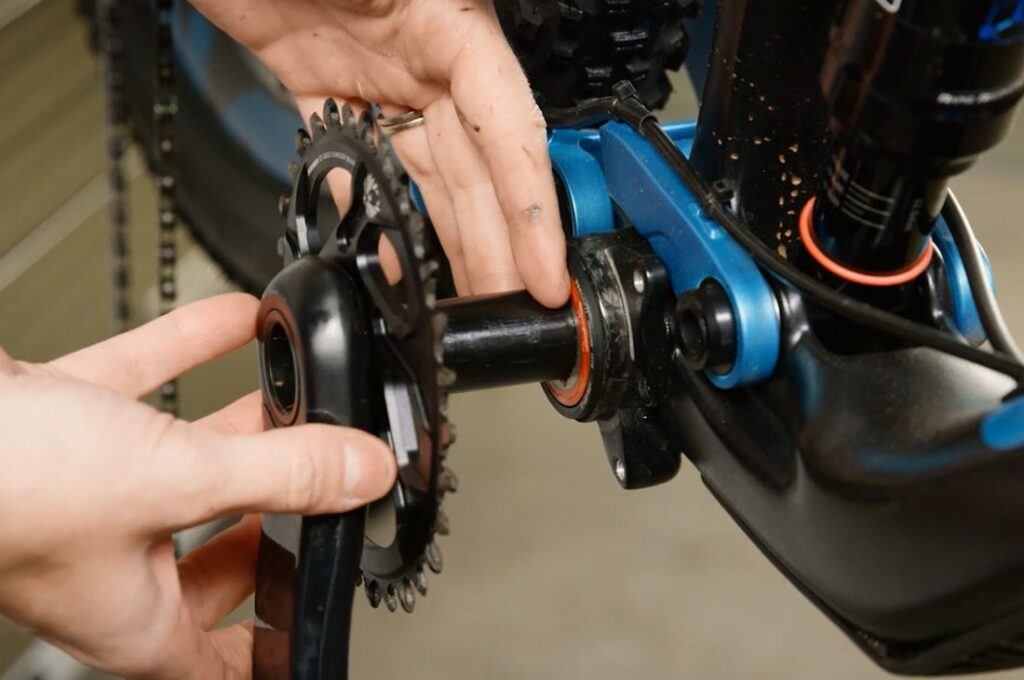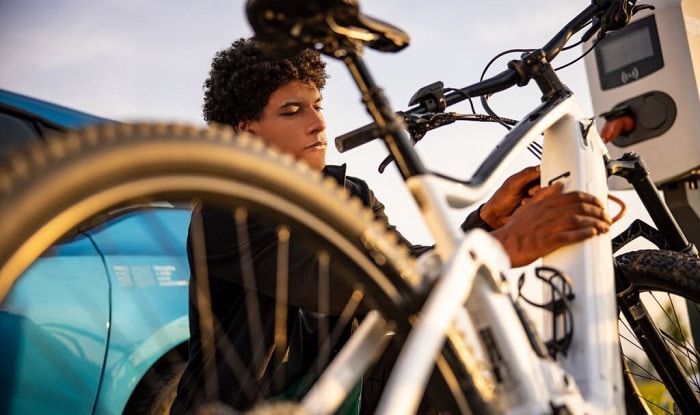Are you tired of feeling every jolt and bump in the road when you ride your electric bike? E-bike vibration can be not only uncomfortable, but it can also cause fatigue and even injury if not dealt with properly. In this article, we’ll explore the causes of e-bike vibration and offer tips on how to reduce it for a smoother, more enjoyable ride.
Table of contents
Understanding E-Bike Vibration
Before we get into how to reduce e-bike vibrations, let’s first understand what we’re dealing with. Vibrations occur when there is an imbalance or uneven distribution of weight or force on the bike. E-bikes in particular can produce more vibration than traditional bikes due to the extra weight of the motor, battery, and other components.
When you ride an e-bike, you may notice a buzzing or shaking sensation that can be felt throughout the bike. This vibration can be felt in the handlebars, pedals, and even the seat. It’s important to understand the causes of e-bike vibration so that you can take steps to reduce it.
Causes of Vibration in E-Bikes
One common cause of e-bike vibration is an improperly balanced wheel. When the wheel is not evenly weighted, this can cause a wobbling motion that leads to vibration. Another cause could be loose or worn out components on the bike, such as the handlebars or crankset.
In addition to these mechanical causes, there are also external factors that can contribute to e-bike vibration. Rough roads or uneven terrain can cause the bike to vibrate, as can high speeds or sudden stops. Understanding these causes can help you identify the source of the vibration and take steps to address it.
How Vibration Affects Your Riding Experience
Aside from being uncomfortable, e-bike vibration can also impact your overall riding experience. It can cause fatigue, making it harder to ride for extended periods. Prolonged exposure to vibration can also lead to conditions such as hand-arm-vibration syndrome (HAVS). This is a condition that affects the nerves, blood vessels, and muscles in the hands and arms, and can cause pain, numbness, and tingling.
Reducing e-bike vibration can help improve your riding experience and prevent these types of injuries. By addressing the root causes of vibration, you can ride more comfortably and safely.
Choosing the Right E-Bike Components
Electric bikes, or e-bikes, are becoming increasingly popular due to their ability to provide a more efficient and eco-friendly mode of transportation. However, one common issue that e-bike riders face is vibration while riding. This can not only be uncomfortable, but it can also lead to fatigue and even injury over time. Fortunately, there are ways to combat this issue by choosing the right e-bike components.
Selecting the Appropriate Frame Material
When it comes to reducing vibration on your e-bike, choosing the right frame material is key. Materials like carbon fiber and titanium are known for their ability to absorb vibration, making them a great choice for e-bike frames. Carbon fiber is a particularly popular choice due to its strength, light weight, and ability to dampen vibrations. Titanium, while heavier than carbon fiber, is also a great option for those looking for a smooth ride.
Another factor to consider when choosing a frame is the geometry. A more upright riding position can help to reduce the amount of vibration felt, as it puts less pressure on your hands and arms. Look for frames with a relaxed geometry that allows for a more comfortable riding position.
Importance of Quality Suspension Systems
Another important component to consider when looking to reduce vibration on your e-bike is the suspension system. Higher quality suspension systems are designed to absorb shock and create a smoother ride. Look for e-bikes with suspension forks and rear shocks that have adjustable settings for different types of terrain.
If you frequently ride on rough terrain, consider upgrading your suspension system to a more advanced model. This can make a significant difference in the amount of vibration felt while riding.
The Role of Tires in Reducing Vibration
Your bike’s tires can also play a role in reducing vibration. Look for tires with a wider tread and deeper grooves, as these will better absorb shock and reduce overall vibration. Additionally, consider using tires with lower air pressure, as this can further improve the ride quality.
Another factor to consider when choosing tires is the size. Larger tires can provide a smoother ride by absorbing more shock, but they may also add weight and reduce maneuverability. Consider your specific needs and riding style when choosing the right tire size for your e-bike.
By taking these factors into consideration when choosing e-bike components, you can significantly reduce the amount of vibration felt while riding. This not only improves the overall comfort of your ride, but it can also help to prevent fatigue and injury over time.
Proper E-Bike Maintenance
Another key factor in reducing e-bike vibration is proper maintenance. Here are a few maintenance tips to keep your e-bike running smoothly:
Regularly Inspecting and Tightening Bolts
Loose or improperly tightened bolts can lead to increased vibration. Regularly inspect and tighten bolts on your e-bike, being sure to follow the manufacturer’s recommended torque specifications.
Additionally, it’s important to check for any signs of wear or damage on the bolts themselves. If you notice any issues, it’s best to replace them immediately to avoid any potential safety hazards.
Lubricating and Cleaning the Chain
A dirty or poorly lubricated chain can also lead to increased vibration. Make sure to regularly clean and lubricate your e-bike’s chain to ensure optimum performance.
When cleaning the chain, be sure to use a degreaser and a stiff bristle brush to remove any dirt or grime buildup. Once the chain is clean, apply a high-quality lubricant to keep it running smoothly.
Ensuring Optimal Tire Pressure
The amount of air in your bike’s tires can also contribute to e-bike vibration. Make sure to keep your tires inflated to the manufacturer’s recommended psi for a smoother ride.
It’s important to check your tire pressure regularly, especially before embarking on a long ride. Low tire pressure can not only cause increased vibration, but it can also lead to decreased handling and increased risk of flats.
Additionally, it’s a good idea to inspect your tires for any signs of wear or damage. If you notice any cuts, punctures, or other issues, it’s best to replace the tire to ensure your safety on the road.
Regularly Checking Brake Pads
Another important aspect of e-bike maintenance is ensuring that your brake pads are in good condition. Worn or damaged brake pads can cause increased vibration, as well as decreased stopping power.
Make sure to regularly check your brake pads for signs of wear, such as a decrease in thickness or unusual noises when braking. If you notice any issues, it’s best to replace the brake pads immediately to ensure your safety on the road.
By following these maintenance tips, you can help reduce e-bike vibration and ensure a smoother, safer ride. Remember to always consult your e-bike’s owner manual for specific maintenance instructions and recommended service intervals.
Customizing Your E-Bike for Comfort
If you’ve tried the above methods and are still experiencing e-bike vibration, don’t worry! There are plenty of ways to customize your e-bike for improved comfort. With a few simple upgrades, you can transform your ride from bumpy and uncomfortable to smooth and enjoyable.
Upgrading to a More Comfortable Saddle
One of the most common sources of discomfort on an e-bike is the saddle. A saddle that doesn’t fit your body properly can cause aches and pains, and contribute to overall vibration. Fortunately, there are plenty of comfortable saddle options available that can help alleviate these issues.
When choosing a new saddle, look for one that is designed for your body type and riding style. Many manufacturers offer saddles specifically designed for e-bikes, which can offer additional padding and shock absorption. Consider trying out a few different options to find the one that works best for you.
Adding Padded Handlebar Grips
Another way to reduce vibration and improve comfort on your e-bike is by adding padded handlebar grips. These grips can help absorb shock and reduce overall vibration felt through your hands and arms, which can greatly improve your overall riding comfort.
When choosing handlebar grips, look for ones that are designed specifically for e-bikes. Many manufacturers offer grips with extra padding or ergonomic designs that can help reduce fatigue and discomfort.
Installing a Suspension Seatpost
If you’re looking for a more advanced solution to e-bike vibration, consider installing a suspension seatpost. These seatposts use a spring or elastomer to absorb shock and reduce vibration, which can make for a much smoother ride.
When choosing a suspension seatpost, look for one that is designed specifically for e-bikes. These seatposts are typically more robust and offer better performance than standard suspension seatposts.
With these upgrades, you can transform your e-bike into a comfortable and enjoyable ride. Don’t let vibration and discomfort hold you back from enjoying the many benefits of e-biking!
Conclusion
E-bike vibration doesn’t have to ruin your riding experience. By understanding the causes of vibration and taking steps to reduce it, you can enjoy a smoother, more comfortable ride on your e-bike. From choosing the right components to proper maintenance and customization, there are many ways to reduce e-bike vibration and enjoy your time on two wheels to the fullest.


